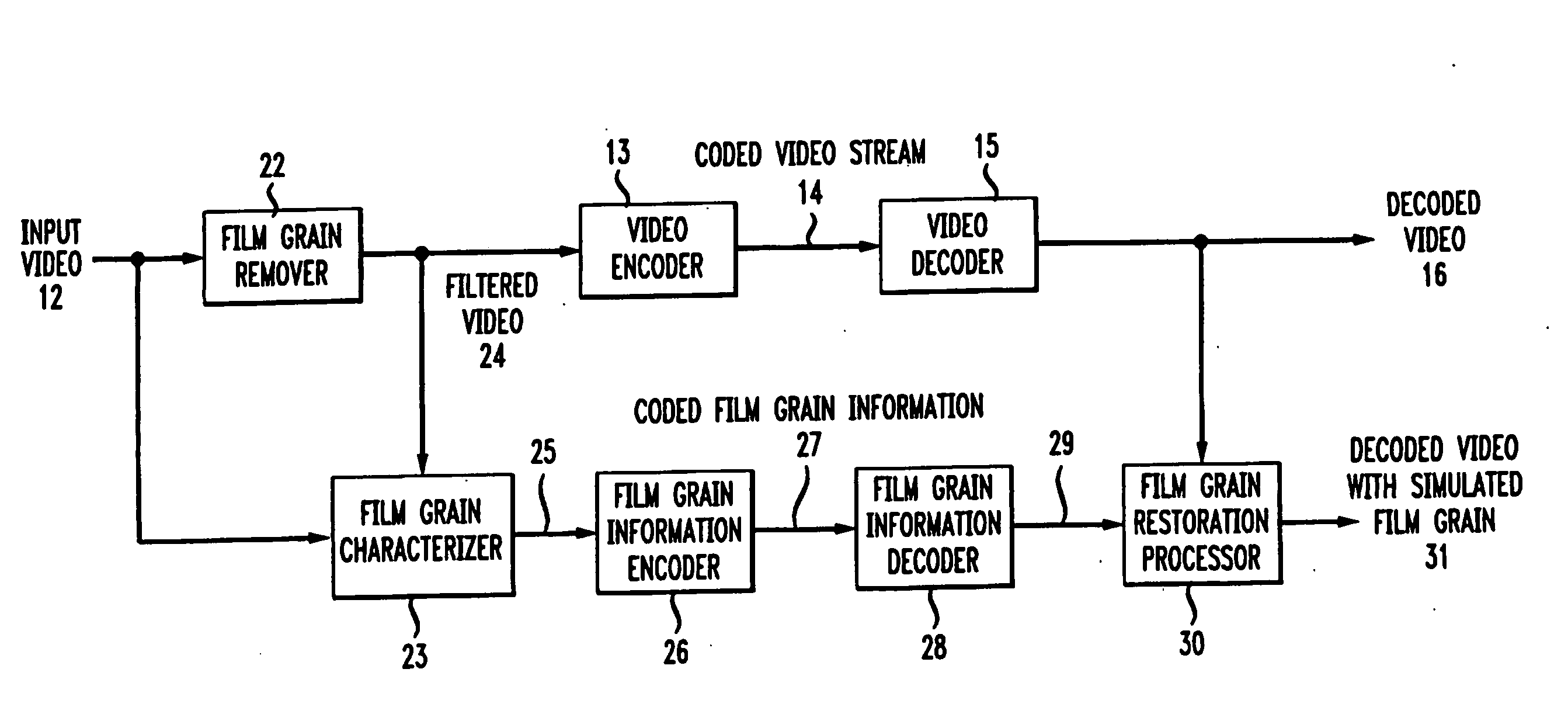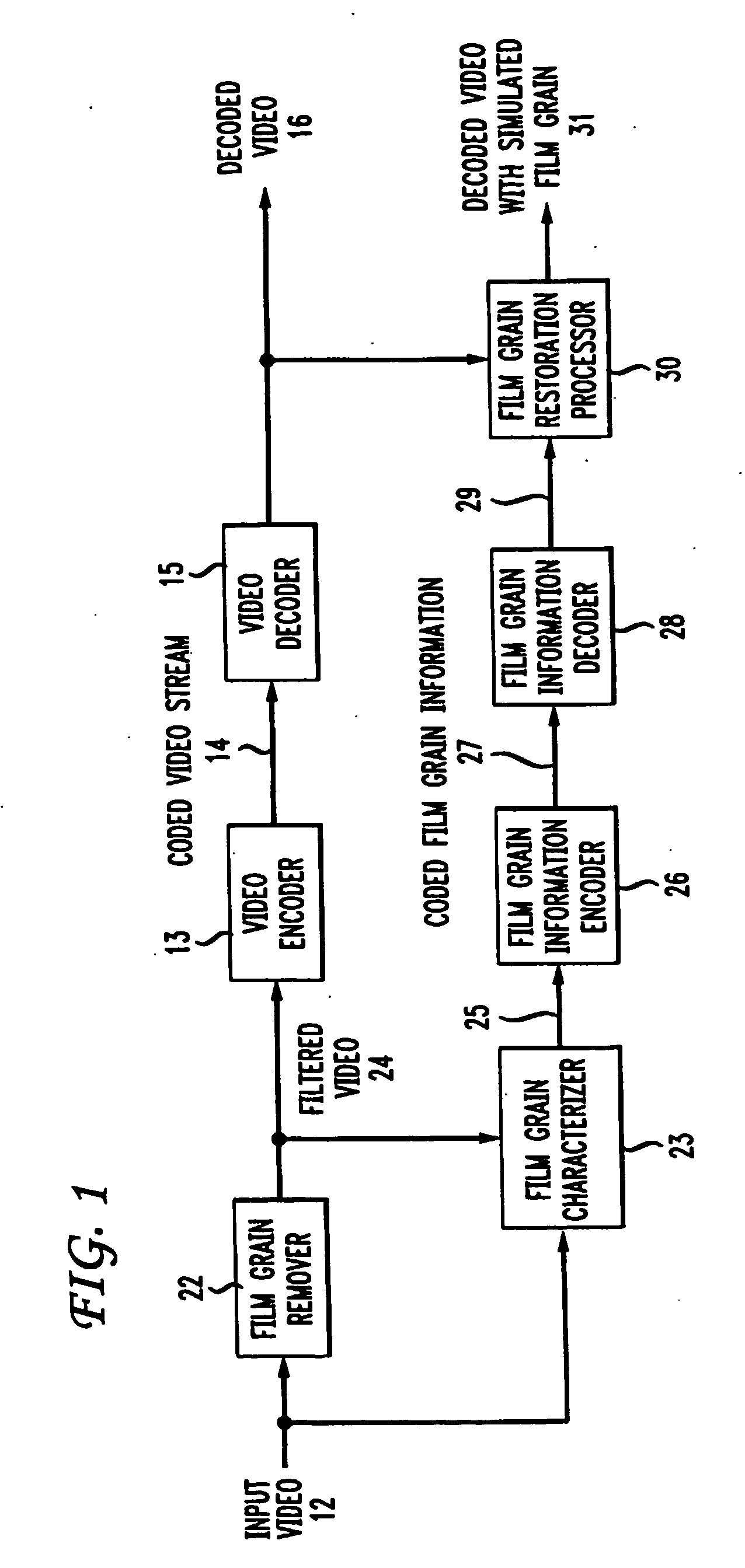Method and apparatus for representing image granularity by one or more parameters
a technology of image granularity and parameters, applied in the field of simulating film grain, can solve the problems of cineon® application not yielding good performance for many high-speed films, film grain simulation fails to achieve adequate fidelity when images are simulated, and motion picture films typically contain image-dependent nois
- Summary
- Abstract
- Description
- Claims
- Application Information
AI Technical Summary
Problems solved by technology
Method used
Image
Examples
Embodiment Construction
[0014]FIG. 1 depicts a block schematic diagram of a first embodiment of a system 10 in accordance with the present principles for performing film grain simulation in accordance with the present principles. The system 10 includes a Film Grain Remover 22 that serves to remove the film grain from an input video stream 12 to yield a filtered video stream 24 received at a Video Encoder 13. Film grain removal constitutes a particular case of noise filtering where the noise signal appears correlated with the image signal. Thus, the Film Grain Remover 22 can take the form of a classical image filter, although such a filter will not necessarily provide optimal performance. The Video Encoder 13 encodes the filtered video stream 24 to yield a coded video stream 14 for receipt at a Video Decoder 15 that decodes the coded stream to yield a decoded video stream 16. The Video Encoder 13 and the Video Decoder 15 utilize the same video coding scheme as are well known in the art. For example, the vid...
PUM
 Login to View More
Login to View More Abstract
Description
Claims
Application Information
 Login to View More
Login to View More - R&D
- Intellectual Property
- Life Sciences
- Materials
- Tech Scout
- Unparalleled Data Quality
- Higher Quality Content
- 60% Fewer Hallucinations
Browse by: Latest US Patents, China's latest patents, Technical Efficacy Thesaurus, Application Domain, Technology Topic, Popular Technical Reports.
© 2025 PatSnap. All rights reserved.Legal|Privacy policy|Modern Slavery Act Transparency Statement|Sitemap|About US| Contact US: help@patsnap.com



